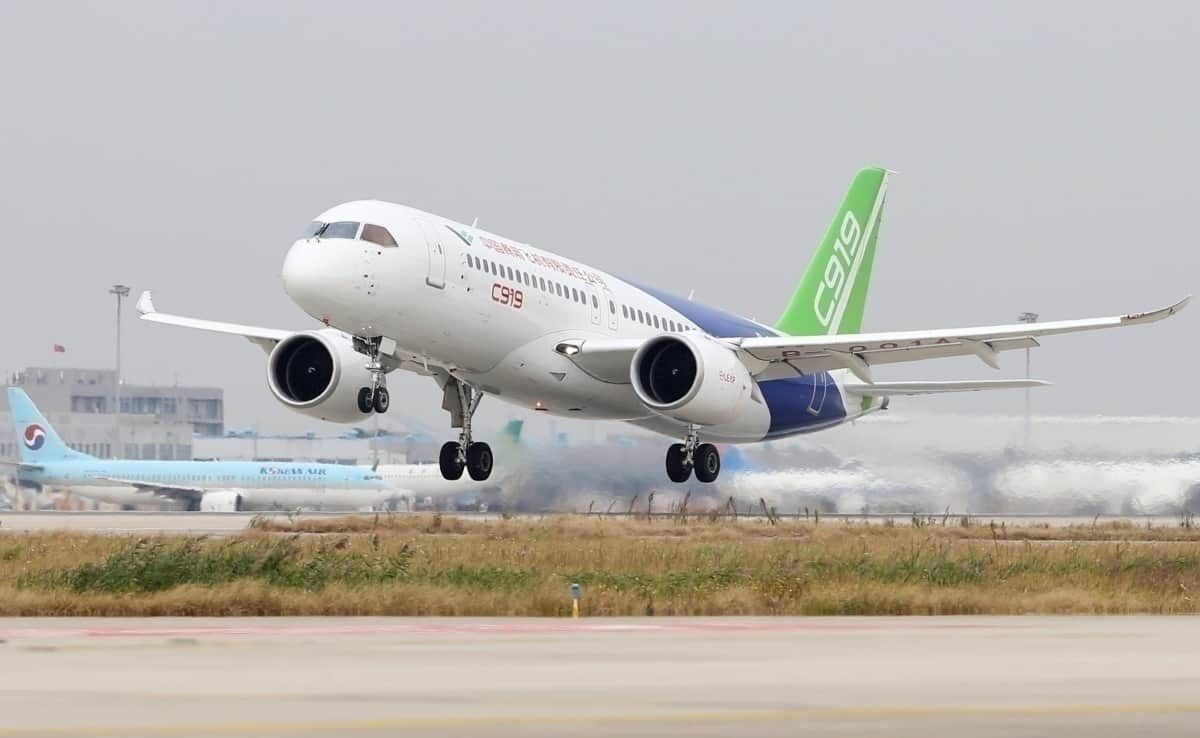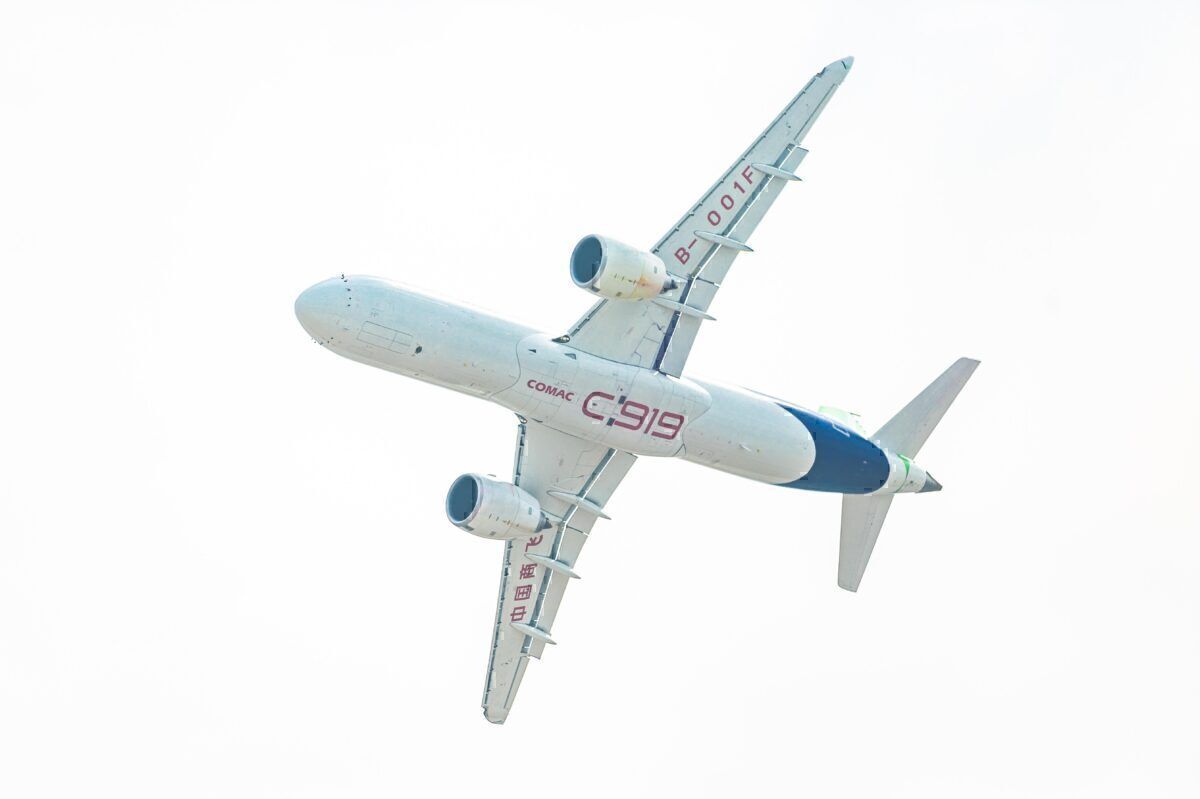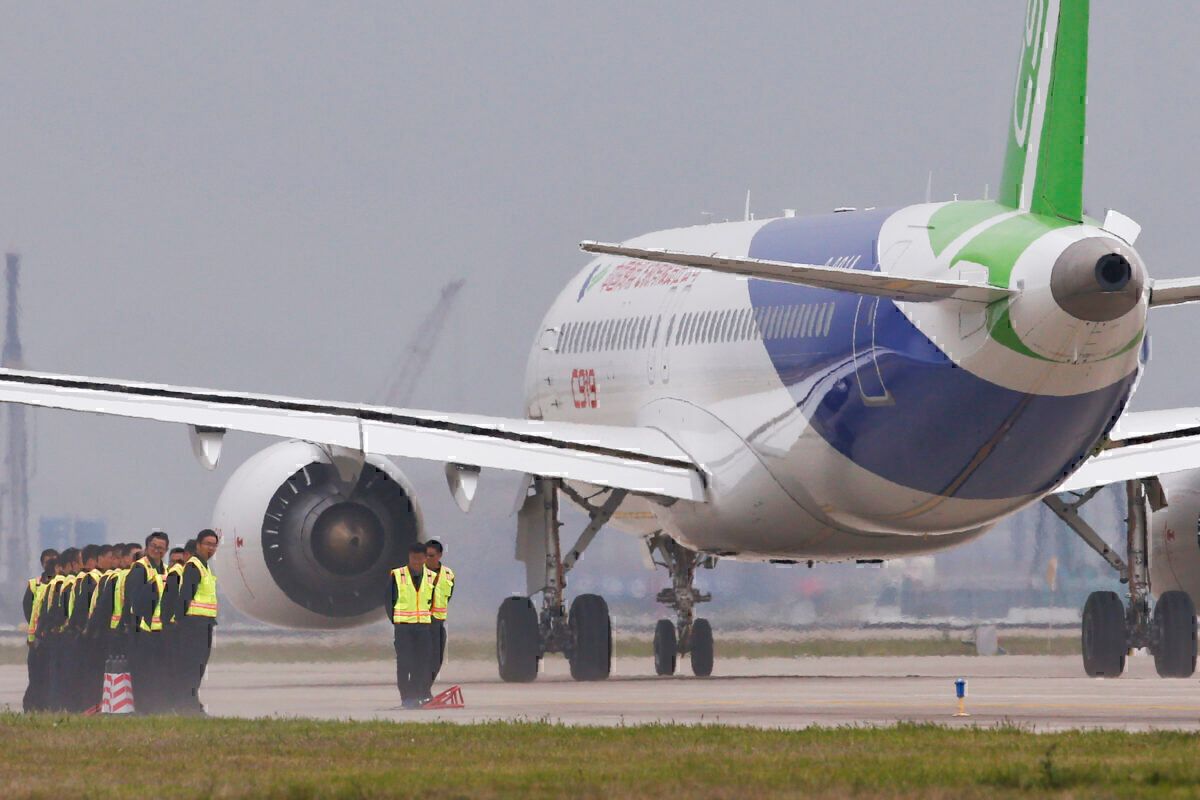China's answer to Airbus and Boeing's narrowbody jets, the Commercial Aircraft Corporation of China (COMAC) C919, has just completed its extreme low-temperature tests in Inner Mongolia over the weekend. The aircraft arrived at Hulunbuir Dongshan International Airport (HLD) on December 25 to complete a series of extreme weather tests to verify the aircraft's performance during extremely cold conditions.
Located in the north of China, not far from Siberia, Hulunbuir is the ideal location for extreme weather tests as the winter temperatures average is minus 25 degrees Celsius.
Stay informed: Sign up for our daily aviation news digest.
Tests were performed at - 35℃
For its first extreme weather flight, the aircraft took off from Hulunbuir Dongshan International Airport and landed at Dongying Shengli Airport (DOY) in Yong'an in Shandong Province. Several experiments were done during the 23 days of testing to challenge the aircraft's performance and equipment. The flight and ground tests were verified to meet standards found in a low-temperature environment of minus 35 degrees Celcius.
Hulunbuir Dongshan International Airport worked with the Commercial Aircraft Corporation of China and other departments, including the China National Aviation Fuel Group (CNAF) to ensure that all the tests were performed at the extremely low temperatures needed. The Hulunbeier Meteorological Service used five sets of meteorological monitoring equipment to vaidate that the tests were performed under the right conditions.
What is Extreme Cold Weather Testing?
Before manufacturers deliver aircraft to customers, they must ensure that aircraft can operate in extreme environmental conditions, from freezing cold to intense heat. For example, Airbus takes its aircraft from the mild weather of Toulouse to Canada's eastern Arctic territory of Nunavut.
The extreme cold can cause all kinds of aircraft parts to break or crack, with metals such as steel and aluminum contracting at different rates. Moving parts can be subjected to greater wear when lubricants lose their viscosity due to the extreme cold. Meanwhile, rubber and plastic can become brittle in freezing temperatures.
About the C919
In a move designed to compete with the Boeing 737 and the Airbus A320 family of jets, China in 2008 decided to set up the Commercial Aircraft Corporation of China (COMAC) and design and manufacture the C919. The C919 is a twin-engine single-aisle aircraft that can seat between 156 and168 passengers in a normal operating configuration.
COMAC took a cautious approach when designing the C919 and came up with a similar aircraft to an older Airbus A320. COMAC is building two variants of the plane: a standard version with a range of 2,200 nautical miles, and an extended range version that can fly 2,999 nautical miles. Both aircraft have an operating ceiling of 39,800 feet.
While China claims it is a Chinese aircraft, most of the plane's parts are from foreign suppliers, with American companies making up to three-fifths of the C919s main parts. The engines are supplied by General Electric and Safran, while Honeywell makes the flight-control system and Rockwell Collins the communication and navigation systems.
So far, the C919 has, as of 2018, 1,008 commitments, including 305 firm orders mainly from Chinese airlines and leasing companies. China Eastern Airlines subsidiary OTT Airlines is scheduled to be the launch customer for the C919 and hopes to receive its first aircraft this year.
The introduction of the C919 will be huge for aviation and also give airlines another option when it comes to narrowbody jets.
What do you think about the C919? Will it be able to compete with Airbus and Boeing? Please let us know what you think in the comments.



